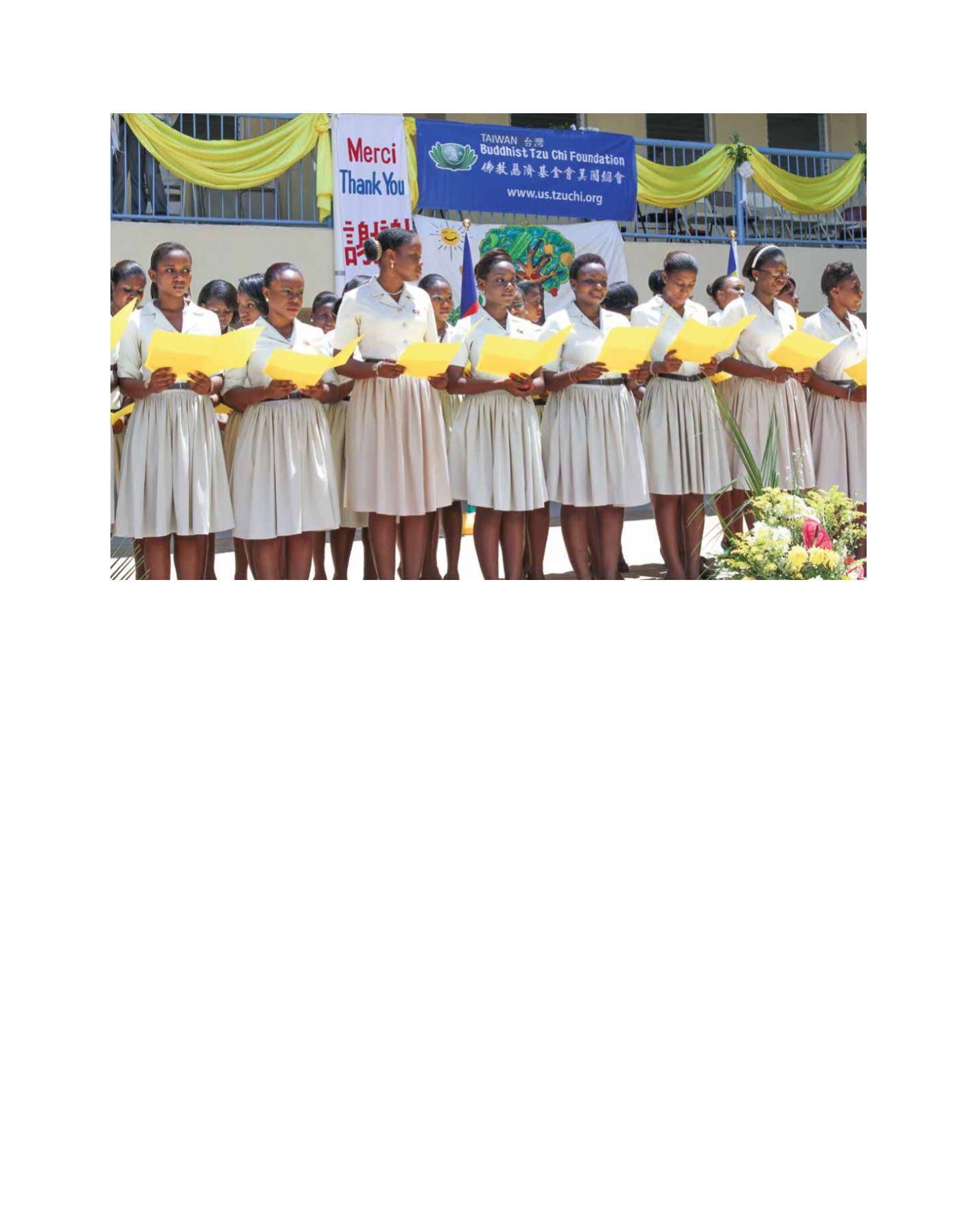

[
] 16
In Haiti, for example, the country continues to recover from
the devastating 7.0 moment magnitude earthquake of 2010
and, to a degree, from foreign aid that excluded local resi-
dents, especially women and girls. Exacerbating the nation’s
struggles are the needs reflected by Haiti’s education system,
where only 50per cent of the children attended school, and
where only 29per cent of Haitians aged 25 or above completed
secondary school. Seeing this need and the conflict between
short-term need and long-term development, as well as the
exclusion of women and girls, Cheng Yen and her followers,
believing that education is the key component to empower-
ment, began to implement education programmes as well as
school and student investment projects. They built an all-girls
school in Port-au-Prince called the Christ the King Secretarial
School, implementing the organization’s very successful
Happy Campus programme, which provides scholarships and
after-school tutoring services to struggling and underprivi-
leged students, and invested in the reconstruction of three
other schools.
This conceptual understanding of true empowerment
comes directly from Cheng Yen and her followers’ faith and
the merit placed on education. They believed that education,
as Confucius articulates, “breeds confidence, and confidence
breeds hope, and hope breeds peace,” thus establishing a
vision of peace that is anchored in harmony, or in the context
of gender, the harmonious balance between men and women.
Five years after the initial implementation of the Happy
Campus programme in Port-au-Prince and Cap Haitian, and
three years after the completion of the College Marie-Anne,
17,985 students enrolled, 14,682 graduated and 16,038
finished school. This retention rate achieved by these schools
is ever more significant as girls in Haiti, similar to those of
many of countries, whether considered to be developing
or developed, are more vulnerable to school drop-out than
boys, especially at the later stage of schooling. While boys
tend to re-enrol, girls are less likely to come back to school.
The success that is manifested through these young women,
however, is also attributed to another key component to
empowerment: partnerships, the synergistic complementation
between collaborating entities. Partnering with local schools,
the community, local faith-based organizations and churches
such as the Sisters of St Anne Congregation, the reconstruc-
tion of the schools was completed.
In the province of KwaZulu-Natal in South Africa live
the Zulu people. With a population of approximately 11
million, the Zulu make up the largest ethnic group in South
Africa. Known for its mighty warriors and legendary battles
of the nineteenth century, the Zulu culture perpetuates a
patriarchal mentality. As a result, the women were gener-
ally mistreated and abused, their treatment exacerbated
by superstition and the lack of economic and educational
opportunities. In the early twentieth century, a sharp
increase in the number of HIV cases was observed among
the Zulu people, growing from 116 cases in 1988 to as many
as 3 million in 2010, taking an average of 1,000 lives each
day. According to Zulu superstition, sexual intercourse with
a virgin would cure those afflicted with this disease, leading
to widespread rape of young girls in the Zulu population,
Image: Buddhist Tzu Chi Foundation
Christ the King Secretarial School was built by Tzu Chi to empower the women of Port-au-Prince, Haiti
A B
etter
W
orld
















